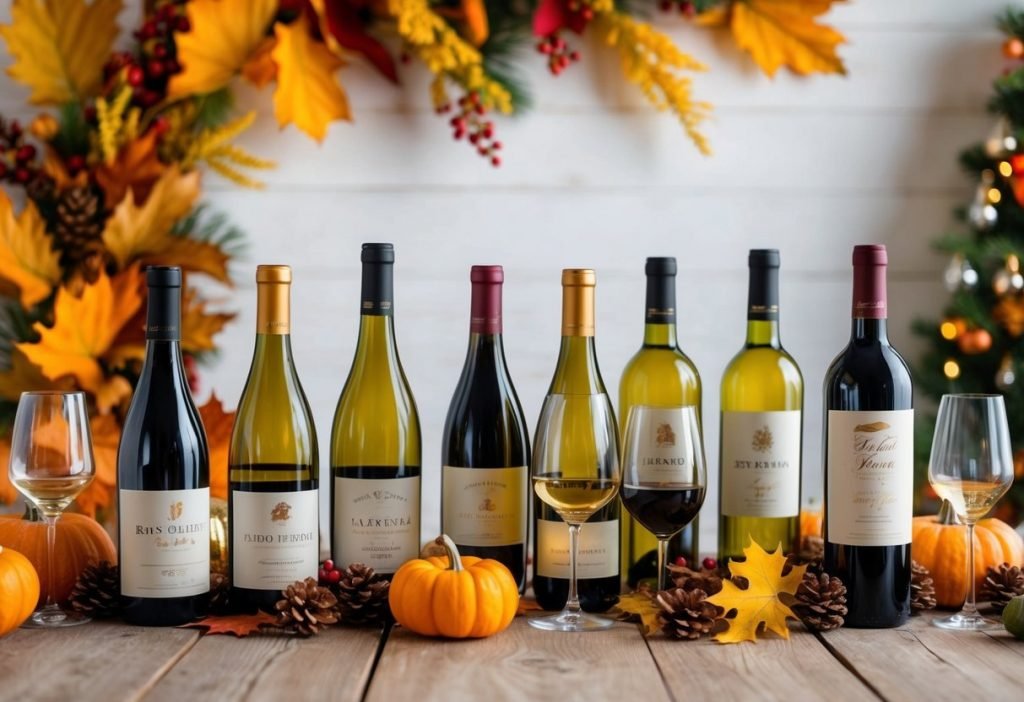For wine enthusiasts seeking value, a range of affordable Cabernet Sauvignons provides excellent options without breaking the bank. These wines boast rich flavors and pleasant aromas, making them ideal for everyday enjoyment or pairing with hearty meals. Many of these selections come from established wine regions, ensuring quality alongside affordability.

Exploring the world of budget-friendly Cabernet Sauvignons reveals a variety of flavors and styles. Whether someone prefers a bold and fruity profile or a more structured and earthy experience, there is likely a budget option that satisfies their palate. The balance of quality and cost makes these wines accessible to both novice drinkers and seasoned connoisseurs.
By understanding where to find these wines and what to look for, individuals can elevate their wine experience without spending excessively. This journey into affordable Cabernet Sauvignons not only promotes smarter purchasing decisions but also opens the door to discovering new favorites.
Understanding Cabernet Sauvignon
Cabernet Sauvignon is one of the world’s most popular red wine varieties, known for its bold flavors and aging potential. It has a rich history and distinct characteristics that appeal to both casual drinkers and wine enthusiasts.
History and Origins
Cabernet Sauvignon originated in the Bordeaux region of France in the 17th century. It is a cross between Cabernet Franc and Sauvignon Blanc, which contributed to its unique attributes. The grape quickly gained popularity due to its ability to thrive in various climates and its resistance to disease.
By the 18th century, Cabernet Sauvignon was being cultivated across other regions, including California and Australia. Its adaptability helped it become a staple in production worldwide. Today, it is grown in almost every wine-producing country, with each region imparting its unique terroir to the wine.
Key Characteristics
Cabernet Sauvignon is recognized for its deep color, full body, and high tannin levels. The flavor profile often includes dark fruits such as blackcurrant, cherry, and plum, accompanied by notes of green bell pepper, tobacco, and sometimes chocolate or vanilla, especially in oak-aged wines.
The acidity in Cabernet Sauvignon typically provides a robust structure that allows for aging. Younger wines tend to be fruity and approachable, while aged varieties offer more complex secondary and tertiary flavors.
Major Growing Regions
Cabernet Sauvignon thrives in numerous regions worldwide, with some of the most notable being:
- Bordeaux, France: The archetype for Cabernet Sauvignon, known for its blends with Merlot.
- Napa Valley, USA: Famous for its rich, fruit-forward examples with high alcohol content.
- Coonawarra, Australia: Recognized for its unique terra rossa soils producing elegant, structured wines.
- Chile: Offers value-driven options with a blend of fruitiness and herbal notes.
Each of these regions showcases varietal differences influenced by climate, soil, and winemaking techniques, contributing to Cabernet Sauvignon’s global appeal.
Affordability in Cabernet Sauvignon
The affordability of Cabernet Sauvignon varies significantly, influenced by several key factors. Understanding these elements helps consumers make informed choices when selecting budget-friendly options.
Price Factors
Various factors contribute to the price of Cabernet Sauvignon. These may include the region of production, grape quality, and winemaking methods.
Region: Wines from prestigious regions such as Napa Valley or Bordeaux often command higher prices due to their reputation and limited production.
Grape Quality: Premium grapes yield more complex wines and typically result in higher costs. Additionally, vintage years can impact pricing; acclaimed years may see increased demand and prices.
Production Costs: Labor, equipment, and aging processes also play a role. Wines that undergo extensive aging or are produced with meticulous techniques may reflect their higher production costs in the retail price.
Economical Brand Profiles
Certain brands are recognized for producing high-quality Cabernet Sauvignon at more affordable prices. These brands prioritize value without sacrificing taste.
Josh Cellars: Known for balanced and approachable Cabernet Sauvignon, often priced around $15-$20.
Louis Moinet: This brand offers varietals that maintain excellent quality for under $20.
Columbia Crest: This Washington winery frequently receives high ratings and offers wines starting around $12.
Exploring limited-production or lesser-known brands can also yield affordable gems. Many emerging wineries focus on creating cost-effective options with impressive flavor profiles.
Value vs. Quality
Assessing value in Cabernet Sauvignon requires considering both the price and the perceived quality.
Price-to-Quality Ratio: A wine priced at $15 can outperform a $50 bottle in taste.
Ratings and Reviews: Checking wine ratings from industry experts and consumer reviews is critical. Wines often rated between 85-90 points may represent a sweet spot for quality at this price range.
Personal Preference: Taste varies by individual; therefore, assessing personal enjoyment is essential. Participating in tastings allows consumers to evaluate quality against cost directly.
Overall, understanding these components of affordability aids in uncovering exceptional Cabernet Sauvignon selections without overspending.
Selecting an Affordable Cabernet

Finding an affordable Cabernet Sauvignon involves careful consideration of label details, vintage quality, and pairing options. These factors can help anyone make informed decisions without overspending.
Label Reading Tips
When evaluating a Cabernet Sauvignon, the label holds essential information. Key components include the vineyard name, region, and alcohol content.
Look for terms like “California,” “Washington,” or “Chile,” as these regions often produce great quality at lower prices. Avoid high-end designations such as “Reserve” or “Single Vineyard,” which typically indicate premium pricing.
Additionally, examine the tasting notes provided. For those seeking fruit-forward flavors, look for descriptors like “blackberry” or “plum.”
It’s also crucial to check for any ratings or awards mentioned on the label. While not definitive, these can hint at quality, especially when produced by reputable wineries.
Vintage Considerations
The vintage year of a Cabernet can significantly impact its price and taste. Recent years with favorable weather conditions often yield better-quality wines. For affordable options, look for vintages that are 3-7 years old.
This age range allows the wine to develop character at a more accessible price point. Vintages from regions such as 2018 in California or 2019 in Chile are examples where good quality meets affordability.
Be mindful that some years yield exceptional grapes while others may not. Researching vintage charts can provide insight into which years are worth seeking out.
Pairing and Serving Suggestions
Finding the right food pairings for Cabernet Sauvignon enhances the tasting experience. This wine pairs well with red meats, grilled vegetables, and rich sauces.
For an affordable bottle, consider a classic pairing with grilled steak or lamb dishes. The tannins in Cabernet help balance hearty flavors, making for a more enjoyable experience.
Serving temperature is equally important. Cabernet Sauvignon is best enjoyed slightly below room temperature, ideally between 60°F and 65°F (15°C to 18°C).
Decanting the wine for about 30 minutes prior to serving helps aerate it, bringing out its full flavors. This simple step can elevate an inexpensive wine to feel more luxurious.
Exploring Beyond the Popular Labels
Many wine enthusiasts focus on well-known brands, often overlooking unique options. Discovering lesser-known producers and emerging regions can yield remarkable cabernet sauvignons that provide excellent value.
Lesser-Known Producers
Several lesser-known producers create exceptional cabernet sauvignons that challenge mainstream brands. For example, Lodi has gained attention for its rich, fruit-forward wines at affordable price points. Notable producers like Michael David Winery and Peltier Station offer compelling options, showcasing the potential of this region.
Additionally, Paso Robles features several small-scale vintners that emphasize quality over quantity. Wineries such as Thorn Hill and Calcareous Vineyard produce distinctive cabernet sauvignons with complexity and character. Exploring these producers can lead to discovering hidden gems that are both affordable and enjoyable.
Emerging Regions
Emerging wine regions are increasingly recognized for producing high-quality cabernet sauvignons. Washington State, particularly Columbia Valley, presents wines that rival those from more established areas. Producers like Chateau Ste. Michelle and Woodward Canyon consistently deliver excellent value without compromising quality.
Another noteworthy region is Chile, where diverse climates contribute to rich flavors. Wineries such as Concha y Toro and Montes create cabernets that offer bold fruit flavors and elegant structures. These wines often come at a fraction of the price compared to their counterparts from California, making them an inviting option for budget-conscious consumers.



